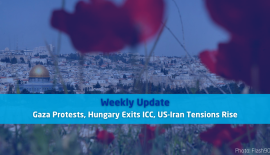The UN Partition Plan
After World War II, the situation in British Mandatory Palestine led to a partition plan for the area. This so-called UN partition plan was approved in 1947 at a United Nations General Assembly.
Cause of the UN Partition Plan
It was chaos in British Mandatory Palestine. After the horrors of the Second World War, more and more Jews decided to settle in this area. This led to a struggle for independence with the British who controlled this area, and many confrontations with the Arabs who were based there.
The two-state solution
In 1947, Great Britain, therefore, decided to hand over the mandate to the United Nations. The UN set up a separate committee to draw up a partition plan for the territory. This two-state solution should be the first step between the Jews and Arabs living in the mandate area. The UN partition plan also referred to as UN resolution 181, proposed that both a Jewish and an Arab state be established with Jerusalem as an international zone.
On 29 November 1947, at the United Nations General Assembly, the majority of the countries present voted in favor of the resolution.
A state of their own for the Jews
While there were mixed reactions from the Jewish population as the territory was relatively small, the resolution opened the door for an independent state, which was indeed proclaimed by the Jewish Agency shortly afterward. Their leader Ben-Gurion accepted the plan. According to him, having your own state was more important than the size of this state.
However, the Arabs did not accept the partition plan and continued to resist. As a result, the partition plan was never realized. In fact, after the official establishment of the State of Israel on 14 May 1948, the surrounding Arab countries declared war on Israel. What followed was a decades-long battle for the territory that continues to this day.




